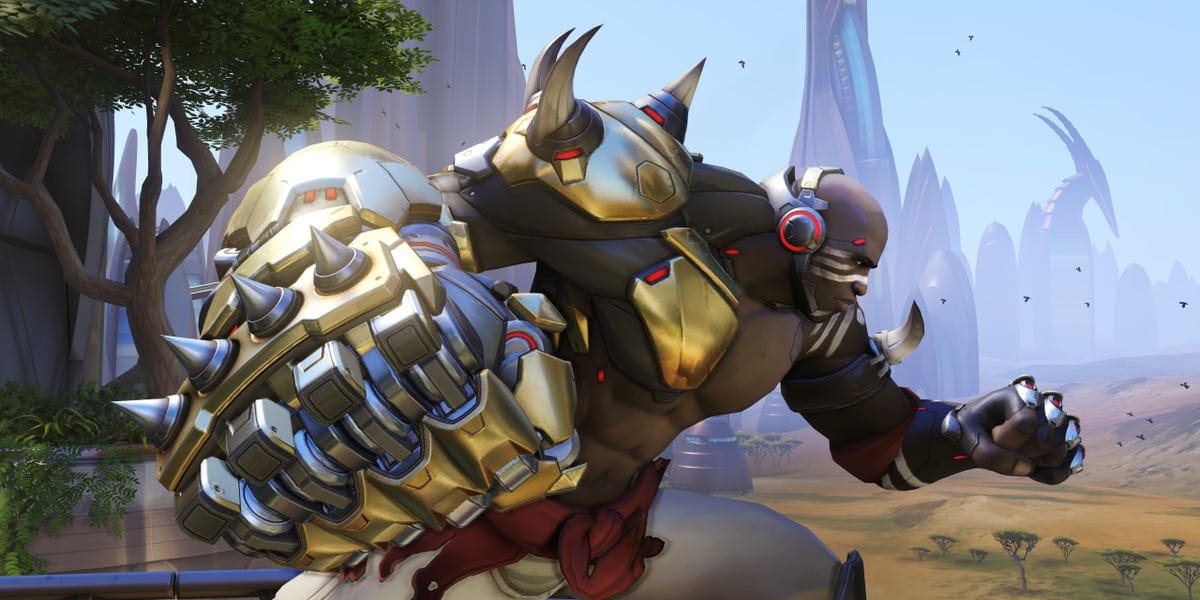With the launch of Overwatch 2, the shooter from Activision Blizzard has shrunk from 6v6 to 5v5. The second tank role has been eliminated. So it makes sense that the role of the rest of the team, who are now the sole heavyweights, is more important and effective than ever. Here’s how to play the class.
The tank’s trajectories and movements must be viewed from two different perspectives: on the one hand, positional play in relation to teammates, and on the other hand, in relation to the map and the general team.
In order to interact well with your team, it is important above all to always know the position of your supporters. As a “Team Tank” you can take on a lot with many hit points, but you are not immortal. Therapists should always have a clear, unobscured field of view for you. If you play too far off your supports, or behind corners where your heal can’t reach you, you’re an easy target for a barrage of damage.
In order to always maintain a good position for your fellow players, you should regularly check where they are. If you encounter your comrades regularly, it is easier to advance together.
You are at the forefront of your squad. With your shield or your high hit points, you throw yourself between the enemy and your team and protect players equipped with less health. As soon as an opportunity arises, you rush forward (create space) and try to take a lot of space for yourself (map control).
This gives the opponent fewer angles to attack from. When your life bar goes down, you need to take advantage of your surroundings. Wait behind corners, pillars, or walls (natural cover) until your therapist can give you the necessary support. Also, you should play around with MedKits in case your support is too far away.
02
Team Voice – Caller to the Shot
As a front row player, your job is to lead the team. You can use voice chat to let fellow players know which opponents to focus on, where to run, or when it’s time to drop. However, your mission begins even before the first fight: as soon as it becomes clear which heroes the opposing team plays, you need to think about which abilities can be dangerous for you.
I, for example, have two very powerful utilities. With her Sleep Arrow and Biotic Grenade, she can turn the entire tide of attack with one directed flick. With a good overview of the opponent’s most important cooldowns, you can improve the timing of your attacks and thus improve your chances of success.
Another important aspect for a strong tank player is a good hull. This means protecting your fellow players through the targeted use of skills. When your healers are attacked, protect them by deflecting flames from them or shielding them with abilities.
If you, as Zarya, know that the opposing Genji hasn’t used his Dragonblade for a long time, you should be more economical with your particle (bubble) barriers. Once the moment has arrived and Genji shoots his final shot, you can protect the target he’s aiming at with a barrier. This means that the attacker does not receive a new dash (reset dash) and can be dealt with more easily by your fellow players.
Another example is D.Va’s defensive Matrix: when an enemy’s DPS is charged like Solider: 76 or Cassidy (formerly McCree), the Matrix can be an effective defense – but only if it’s charged enough.

“Social media evangelist. Baconaholic. Devoted reader. Twitter scholar. Avid coffee trailblazer.”









More Stories
Ubisoft wants to release a new Assassin's Creed game every 6 months!
A horror game from former developers at Rockstar
Turtle Beach offers the Stealth Pivot Controller for PC and Xbox